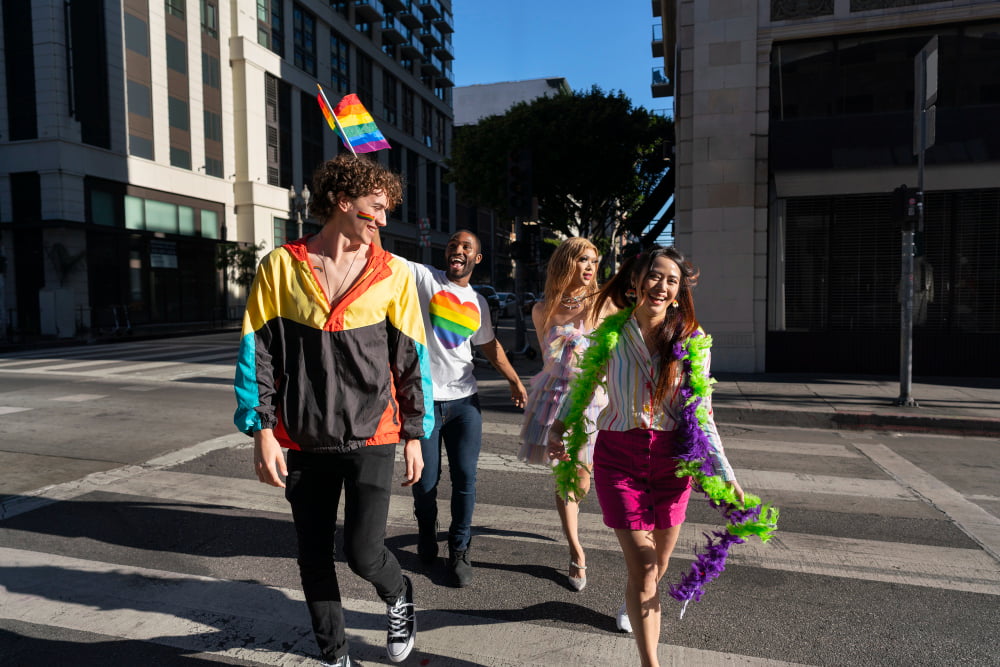Introduction: The journey towards LGBTQ+ rights has been one of courage, resilience, and transformation. While significant strides have been made, the path to equality remains fraught with challenges. This article delves into the historical struggles, legal advancements, persistent challenges, and various dimensions of LGBTQ+ rights and advocacy.
Historical Struggles of the LGBTQ+ Community
Throughout history, LGBTQ+ individuals have confronted systemic discrimination and persecution. From the era of witch hunts to the criminalization of homosexuality, the struggles have been deeply ingrained. The Compton’s Cafeteria riot of 1966 and the Stonewall uprising of 1969 marked pivotal moments of resistance against police brutality and social oppression.
Milestones in LGBTQ+ Rights
The Stonewall riots ignited a wildfire of activism, leading to the first Pride marches and the establishment of LGBTQ+ organizations. The removal of homosexuality from the list of mental disorders by the World Health Organization in 1992 was a watershed moment, challenging deeply rooted prejudices. The 2015 Obergefell v. Hodges decision by the U.S. Supreme Court legalized same-sex marriage across the United States, symbolizing a triumph over discrimination.
Legal Landscape for LGBTQ+ Rights
The legal trajectory of LGBTQ+ rights is a tale of battling bigotry. The 2003 Lawrence v. Texas case struck down sodomy laws, decriminalizing homosexuality. The 2020 Bostock v. Clayton County case affirmed that federal anti-discrimination laws protect LGBTQ+ employees. Yet, as the struggle for transgender rights continues, laws around the world remain inconsistent, leaving many LGBTQ+ individuals vulnerable.

Challenges Faced by the LGBTQ+ Community
Discrimination continues to cast a long shadow over the LGBTQ+ community. Hate crimes, employment discrimination, and denial of healthcare services persist. Transgender individuals face formidable hurdles in securing legal recognition and accessing gender-affirming care. The intersectionality of identities, such as being LGBTQ+ and a person of color, compounds the challenges faced.
Healthcare Disparities and LGBTQ+ Individuals
LGBTQ+ individuals often encounter disparities in healthcare access. Discriminatory practices, lack of cultural competence, and ignorance about LGBTQ+-specific health needs contribute to inadequate care. The resulting health disparities, including mental health struggles, underscore the urgency of comprehensive healthcare reform.
Empowering LGBTQ+ Youth Through Education
Educational settings should be nurturing grounds for all, but LGBTQ+ youth often face hostility. Bullying, exclusion, and limited access to inclusive sex education harm their well-being. Educators play a pivotal role in creating safe spaces where LGBTQ+ youth can thrive and access accurate information about their identities.
Media Representation and LGBTQ+ Narratives
Media shapes perceptions, and LGBTQ+ representation has evolved over time. From harmful stereotypes to authentic portrayals, media influences societal attitudes. Positive representation fosters empathy, dispels misconceptions, and helps LGBTQ+ individuals feel seen and accepted.
Global Perspectives on LGBTQ+ Rights
LGBTQ+ rights transcend borders, highlighting both progress and setbacks. Countries like the Netherlands and Canada have pioneered LGBTQ+ rights, while others criminalize same-sex relationships. The struggle for global LGBTQ+ rights encompasses raising awareness, supporting local activists, and advocating for change on an international scale.

Corporate World and LGBTQ+ Inclusivity
Businesses are recognizing the value of LGBTQ+ inclusivity. Companies like Google and Microsoft have championed LGBTQ+ rights with inclusive policies and resource groups. However, challenges such as workplace discrimination and unequal access to benefits persist, underscoring the need for consistent progress.
Transgender Rights and Intersectional Advocacy
Transgender rights stand at the intersection of gender and identity. While progress has been made in legal recognition, challenges endure. Advocacy is not one-size-fits-all; intersectional efforts consider the overlapping experiences of transgender individuals who face unique challenges due to their gender identity, race, disability, or socioeconomic status.
Diversity in LGBTQ+ Activism and Movements
LGBTQ+ activism is a mosaic of voices and experiences. Activists of color, disabled activists, and those from various backgrounds have enriched the movement. Social media has democratized activism, empowering individuals to create change, foster dialogue, and challenge systemic inequalities.
Religious Considerations and LGBTQ+ Rights
Religious perspectives on LGBTQ+ rights vary widely. Some faith communities are embracing LGBTQ+ individuals, while others remain steadfast in their opposition. Interfaith dialogue and inclusive religious spaces showcase the evolving intersection of spirituality and LGBTQ+ identities.
Envisioning the Future of LGBTQ+ Rights
Envisioning the future of LGBTQ+ rights demands recognizing progress and ongoing challenges. Evolving laws, cultural shifts, and generational change will shape the landscape. Addressing lingering prejudice, protecting LGBTQ+ youth, and advocating for comprehensive policies remain essential.

The journey towards LGBTQ+ rights has been one of extraordinary courage and collective resilience. While tremendous progress has been achieved, the work is far from over. Continued advocacy, empathy, and education are crucial to ensure that the arc of history bends towards justice for all LGBTQ+ individuals.
FAQs about LGBTQ+ Rights
Q1: What is the significance of the Stonewall riots? The Stonewall riots of 1969 marked a turning point in LGBTQ+ rights activism. They were a series of spontaneous demonstrations against a police raid at the Stonewall Inn in New York City and are considered the catalyst for the modern LGBTQ+ rights movement.
Q2: How can allies support the LGBTQ+ community? Allies can support the LGBTQ+ community by educating themselves, actively challenging discrimination, using inclusive language, and advocating for policies that promote equality and acceptance.
Q3: What is the relationship between LGBTQ+ rights and mental health? LGBTQ+ individuals often face higher rates of mental health challenges due to discrimination and stigma. Providing affirming and inclusive spaces can positively impact mental health outcomes.
Q4: How can we address challenges faced by LGBTQ+ youth in educational settings? Creating safe and inclusive educational environments is essential. This includes implementing anti-bullying policies, offering comprehensive sex education that includes LGBTQ+ topics, and training educators to support LGBTQ+ students.
Q5: What can individuals do to support global LGBTQ+ rights? Supporting global LGBTQ+ rights involves raising awareness, donating to organizations working on the ground, and advocating for diplomatic pressure on countries with regressive LGBTQ+ laws.






